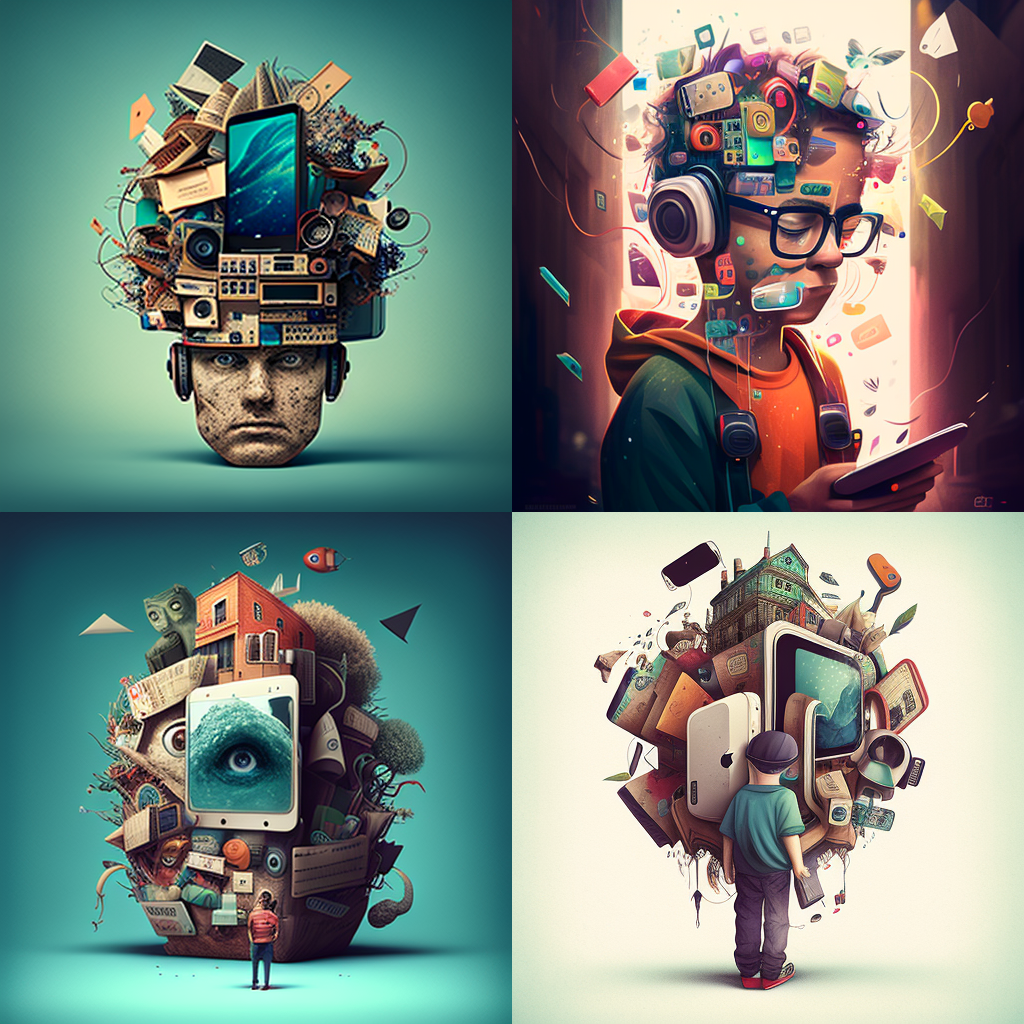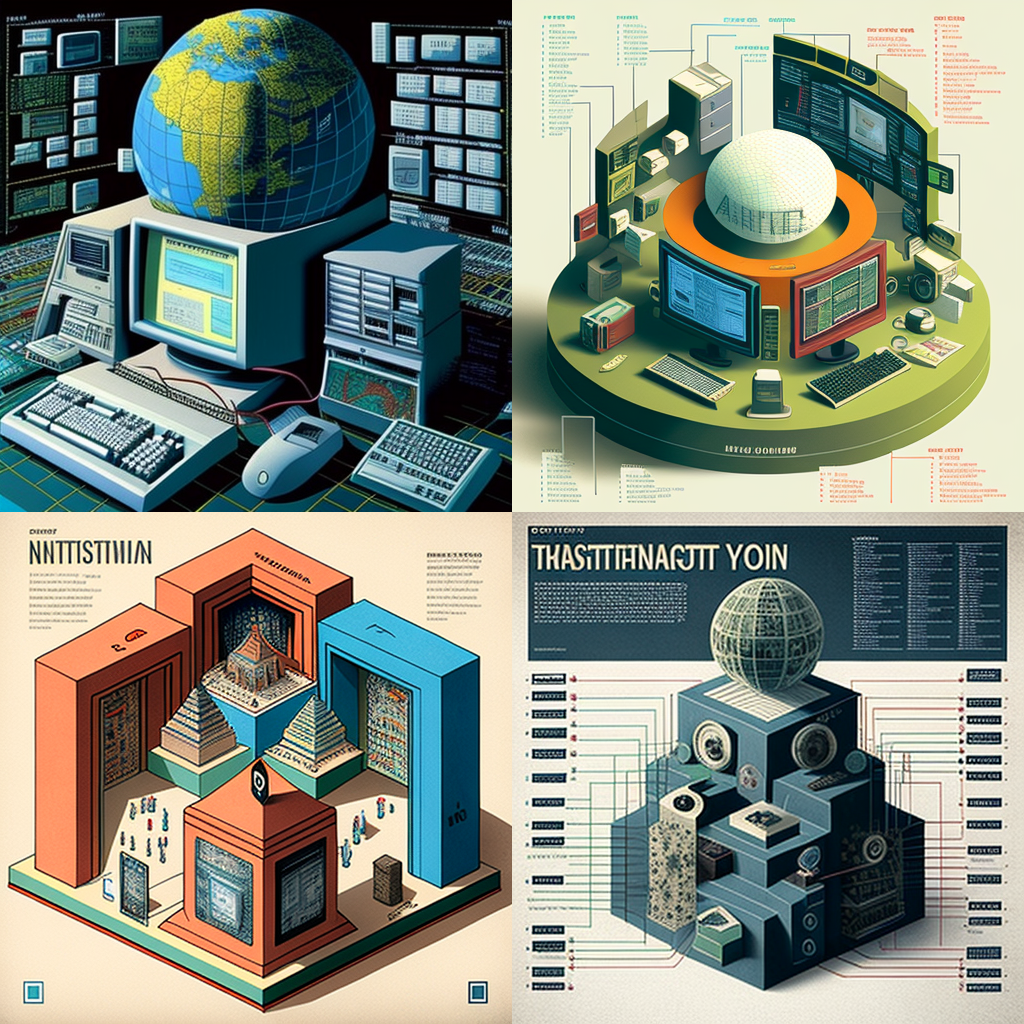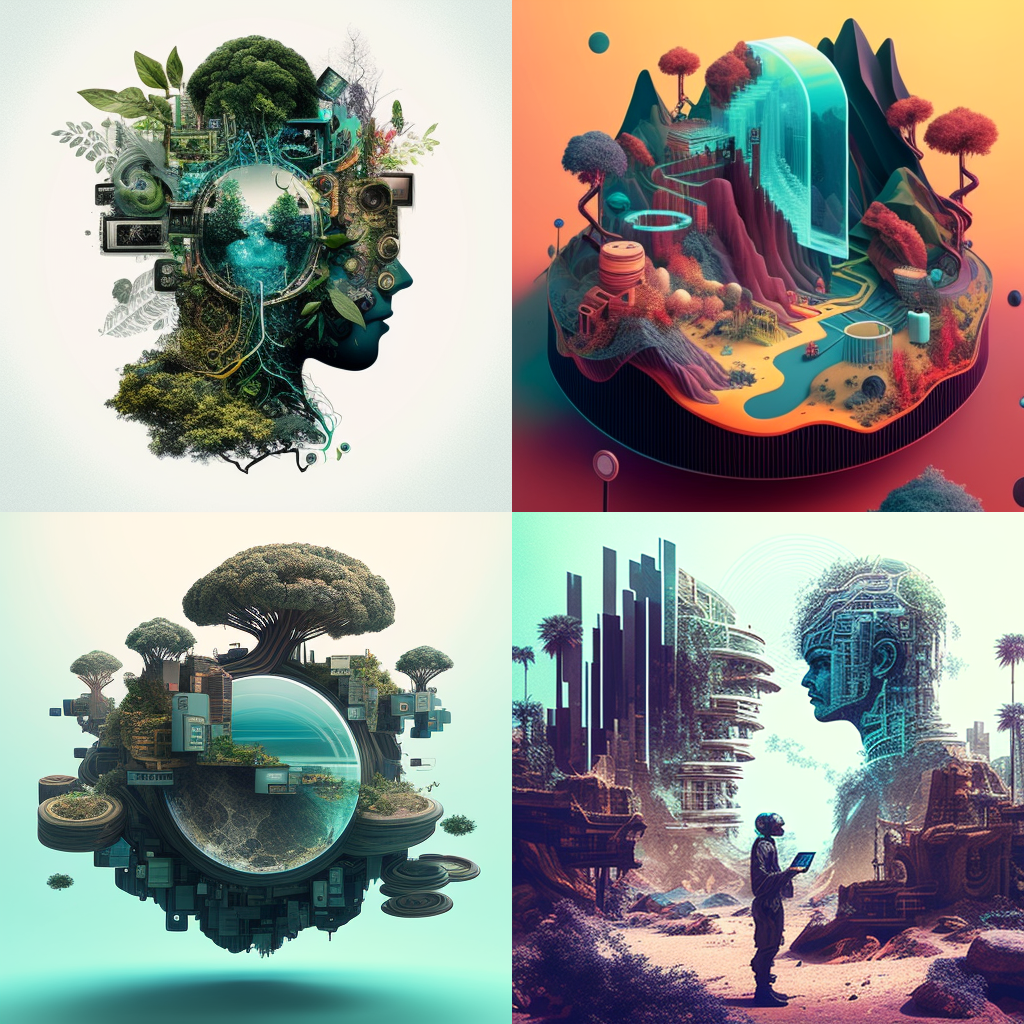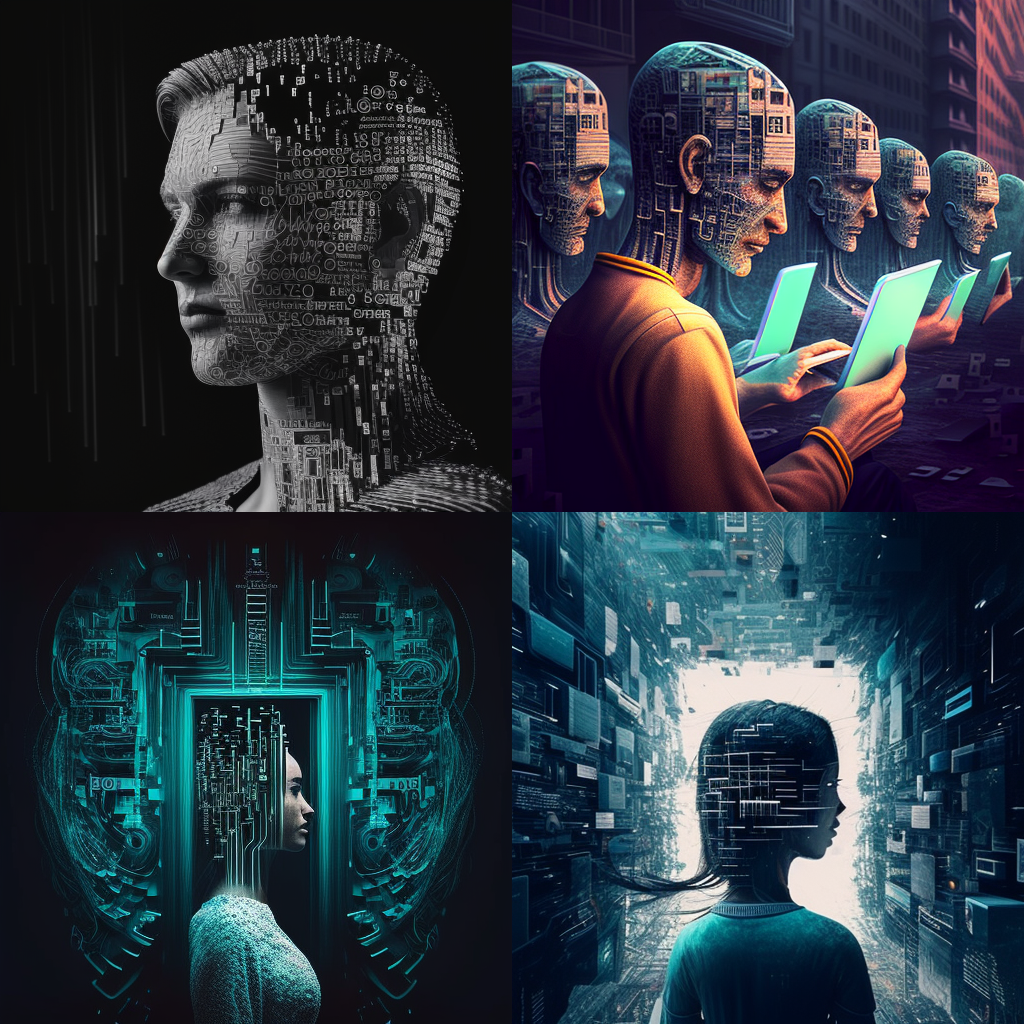This post is my findings for the course Advanced Topic in Technology & Innovation Management, based on the paper “Digital First: The Ontological Reversal And New Challenges For Information System Research (Baskerville et al., 2020)”
Digital technology shapes our daily lives
Our world is increasingly computed. The two essential properties of digital objects are their non-materiality and computed nature.
- Digital objects are nonmaterial bitstrings. They exist in the form of sequences of bits (0 and 1), regardless of content.
- Digital objects are always computed and require the execution of a set of instructions to produce them.

With the ontological reversal, physical objects are the outcome of printing digital objects onto physical bearers. In other hand, “The digital version is produced first; the physical version second”
Computed Human Experiences in a Digital First World
Computed human experiences: The paper focuses on the concept of computed human experiences in a digital first world, where digital technology mediates various aspects of human experiences, including time, place, artifacts, and actors.
Intertwined physical and digital realities: The relationship between physical and digital realities is becoming increasingly intertwined, with digital technology shaping and being shaped by both physical and digital aspects of our lives.
Changing roles of digital and physical realities: The digital world is becoming the principal aspect of our realities as it defines and creates the physical world, with elements of growing importance that cannot exist in the physical world alone.
Emerging digital platforms and institutional forces: Macro-level forces, such as emerging digital platforms and institutional forces, shape each other and impact the relationship between digital and physical realities.

Examples of computed human experiences: Google Maps and wearable devices, such as Apple Watch and Fitbit, illustrate how digital technology mediates human experiences through algorithms and digital infrastructure.
Algorithm-curated services: People increasingly rely on services curated by algorithms, such as dining, listening to music, walking, and reading, which in turn shape their experiences and decision-making processes.
Manipulation of algorithms and the world we see: The capability to manipulate algorithms implies a capability to manipulate the world we see, as our actions and data contribute to the computation of experiences for ourselves and others in the digital world.
Digital Platform Ecosystems and Computed Human Experiences
Digital Platform Ecosystems: These ecosystems, enabled by large-scale cloud-based infrastructures, big data analytics, and artificial intelligence, compete to offer services to users by delivering digital objects combined with physical resources.
Types of Platform Ecosystems: Some platforms, like Facebook, YouTube, and Spotify, are driven primarily by digital objects, while others, like Uber, Airbnb, and 3D printing platforms, orchestrate the mobilization of physical resources to deliver services.
Digital Objects and Physical Reality: Most digital objects are created by analyzing and recombining existing digital objects produced from physical reality. These digital objects are then used to shape physical reality, representing an ontological reversal.
Strengthening Trend of Ontological Reversal: As digitalization continues, the trend of ontological reversal will become stronger, with more powerful algorithms processing ever-growing data coming from all aspects of our lived experiences.
Surprising Improvements and Deteriorations: Digital objects created by algorithms can lead to surprising improvements, like AlphaGo’s unexpected moves, or deteriorations, such as the Boeing 737 MAX’s software issues.

Navigating Multiple Platform Ecosystems: Users constantly move between different platform ecosystems, which offer competing or complementary services, requiring them to navigate the intertwined duality of physical and digital reality in their computed human experiences.
Multiple Institutional Logics and Computed Human Experiences in a World of Digital First
Computed Human Experiences: Curated by digital platform ecosystems, these experiences are shaped by multiple institutional logics and the social practices they underpin.
Institutional Logics: Symbolically grounded organizing principles that guide individual practices in line with a given institution, affecting how individuals interact with actors and artifacts.
Complex Overlapping Array: Users constantly navigate various institutional forces mediated through institutional logics they enact.
Technology Representation: Institutional logics are increasingly represented in the form of technology, enabling and constraining human actions in different social settings.
Computational and Algorithmic: Institutional logics are becoming computational and algorithmic, as seen in the stock market and mortgage underwriting examples.
Enmeshed with Ontological Reversal: Digital technology shapes the world and human experiences directly, with formal legal regulations and users’ perceptions influencing digital platform operations.

Arguments for this point of view of the paper
Overemphasis on digital experiences: The paper’s focus on “Digital First” might overlook the importance of maintaining a balance between digital and physical experiences. Human beings are inherently social creatures, and over-reliance on digital experiences could potentially result in a loss of interpersonal skills, empathy, and human touch.
Technological determinism: The ontological reversal concept presented in the paper may inadvertently promote a deterministic perspective, where technology is viewed as the primary driver of societal change. This perspective might underestimate the role of human agency, social structures, and historical context in shaping technology’s development and impact.
Digital divide: The paper’s emphasis on “Digital First” may not fully address the digital divide and the potential exclusion of vulnerable populations lacking access to digital technologies. By prioritizing digital experiences, we risk exacerbating existing inequalities and further marginalizing disadvantaged groups.
Insufficient focus on privacy and security concerns: Although the paper discusses various ethical concerns related to the “Digital First” approach, it may not delve deeply enough into privacy and security issues. The increasing reliance on digital platforms and interconnected ecosystems raises questions about the protection of personal data, user privacy, and security vulnerabilities.
Underestimation of human adaptability and resilience: The paper’s focus on the ontological reversal and its implications may not give enough credit to the human capacity for adaptability and resilience. People have the ability to navigate and adapt to complex and changing environments, and this adaptability should be considered when studying the impact of the “Digital First” approach.
Different regions may adopt or adapt to digital-first approaches at varying rates, depending on factors like infrastructure, cultural norms, and socio-economic conditions

Digital First – Pros and Cons
| Advantages | Disadvantages |
| Accessibility & Convenience Cost-effectiveness Personalization & Customization Data-driven Decision Making Innovation & Adaptability | Digital Divide Privacy & Security Concerns Overdependence on Technology Loss of Human Connection Mental Health Impacts |
The future of Digital First World
Smart Cities: Digital technologies will play a significant role in creating smart cities where urban infrastructure and services are connected, efficient, and sustainable. This includes intelligent transportation systems, energy-efficient buildings, smart waste management, and enhanced public safety.
AI and Automation: Artificial intelligence (AI) and automation will continue to advance, transforming industries and job markets. A digital-first approach will enable humans to work alongside AI and robots, focusing on tasks that require creativity, empathy, and critical thinking.
Virtual and Augmented Reality: Virtual and augmented reality technologies will become more integrated into daily life, providing immersive experiences in entertainment, education, and communication. This may lead to new ways of interacting with the digital world and connecting with others.
Remote Work and Learning: The adoption of remote work and online learning will likely continue, making it possible for people to work and study from anywhere in the world. This can lead to increased global collaboration, diverse perspectives, and more flexible lifestyles.
Telemedicine and Digital Health: Telemedicine and digital health solutions will become more widespread, enabling better access to healthcare services, personalized treatments, and improved patient outcomes. This includes wearable devices for monitoring health, virtual consultations with medical professionals, and AI-driven diagnostics.
Sustainable Development: Digital technologies can contribute to sustainable development by optimizing resource use, reducing waste, and enhancing environmental conservation. Examples include smart agriculture, renewable energy management, and climate monitoring systems.
Digital Inclusion: Efforts to bridge the digital divide and ensure that everyone has access to digital resources and services will be critical. This includes affordable internet access, digital literacy programs, and initiatives to support underrepresented groups in the tech sector.
Privacy and Security: As digital technology becomes more pervasive, privacy and security concerns will need to be addressed through robust data protection regulations, advanced cybersecurity measures, and user education.
Open Questions
“Digital First” seems be more available and adaptive for Service fields or supportive tools of Service, how about attemption for industrial products?
In field of manufactured products, what creates the difference between Digital transformation and Digital First, or Digital First is simply a new framework to apply Digital Transformation?
What are the implications of a technosociety where human relations and actions are heavily mediated by technology?
What if computed human experiences including “emotional” and “psychological” aspects? How Digital First attemptation? Risk to human?
“Embracing Digital First in human experience is like opening a gateway to infinite possibilities, where the digital realm not only complements but also elevates our physical existence, transforming the way we connect, learn, and grow as individuals and as a society.” – Quote generated from ChatGPT4
Image: MidJourney
